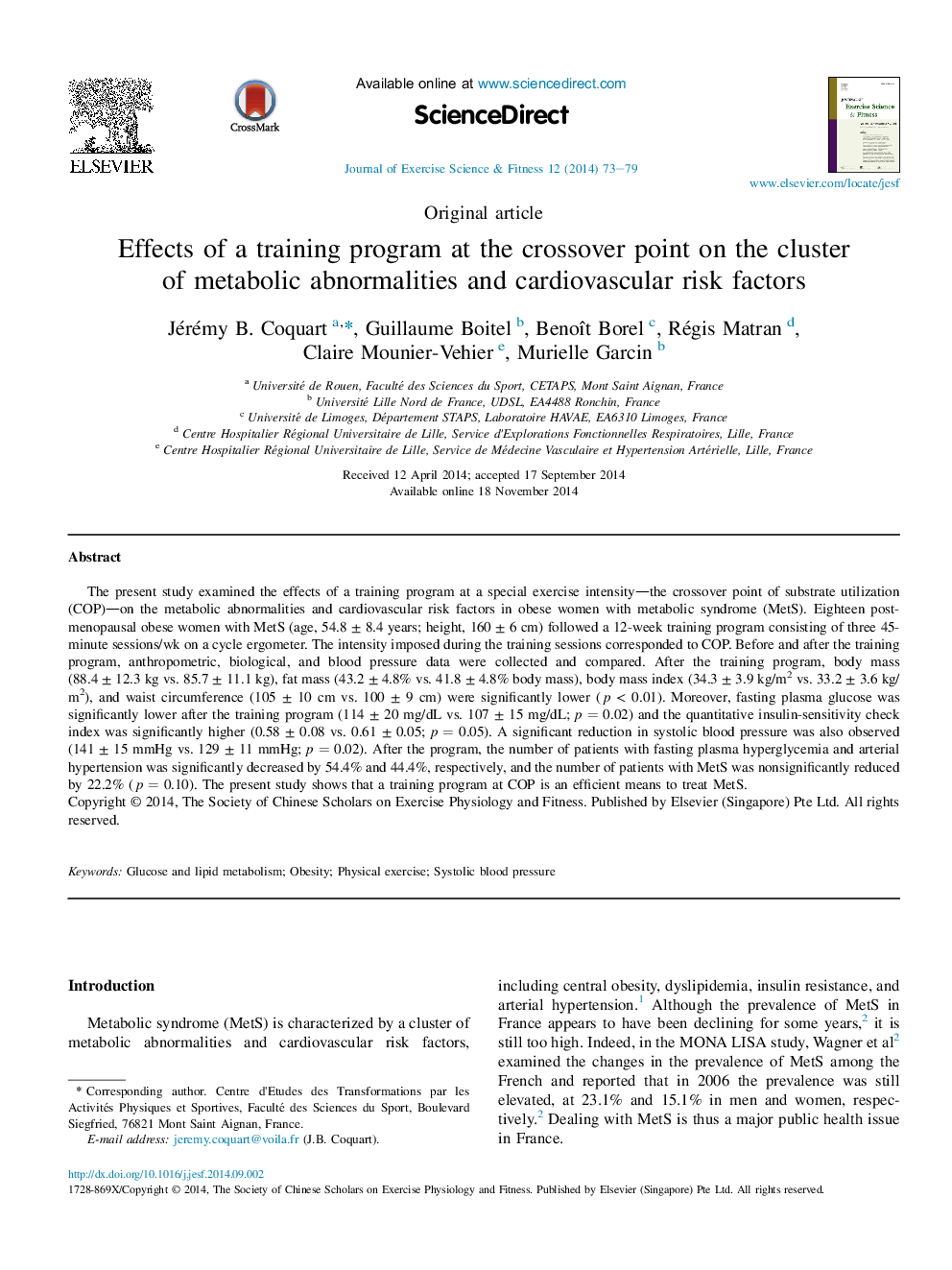| Article ID | Journal | Published Year | Pages | File Type |
|---|---|---|---|---|
| 5881653 | Journal of Exercise Science & Fitness | 2014 | 7 Pages |
Abstract
The present study examined the effects of a training program at a special exercise intensity-the crossover point of substrate utilization (COP)-on the metabolic abnormalities and cardiovascular risk factors in obese women with metabolic syndrome (MetS). Eighteen postmenopausal obese women with MetS (age, 54.8 ± 8.4 years; height, 160 ± 6 cm) followed a 12-week training program consisting of three 45-minute sessions/wk on a cycle ergometer. The intensity imposed during the training sessions corresponded to COP. Before and after the training program, anthropometric, biological, and blood pressure data were collected and compared. After the training program, body mass (88.4 ± 12.3 kg vs. 85.7 ± 11.1 kg), fat mass (43.2 ± 4.8% vs. 41.8 ± 4.8% body mass), body mass index (34.3 ± 3.9 kg/m2 vs. 33.2 ± 3.6 kg/m2), and waist circumference (105 ± 10 cm vs. 100 ± 9 cm) were significantly lower (p < 0.01). Moreover, fasting plasma glucose was significantly lower after the training program (114 ± 20 mg/dL vs. 107 ± 15 mg/dL; p = 0.02) and the quantitative insulin-sensitivity check index was significantly higher (0.58 ± 0.08 vs. 0.61 ± 0.05; p = 0.05). A significant reduction in systolic blood pressure was also observed (141 ± 15 mmHg vs. 129 ± 11 mmHg; p = 0.02). After the program, the number of patients with fasting plasma hyperglycemia and arterial hypertension was significantly decreased by 54.4% and 44.4%, respectively, and the number of patients with MetS was nonsignificantly reduced by 22.2% (p = 0.10). The present study shows that a training program at COP is an efficient means to treat MetS.
Related Topics
Health Sciences
Medicine and Dentistry
Orthopedics, Sports Medicine and Rehabilitation
Authors
Jérémy B. Coquart, Guillaume Boitel, Benoît Borel, Régis Matran, Claire Mounier-Vehier, Murielle Garcin,
